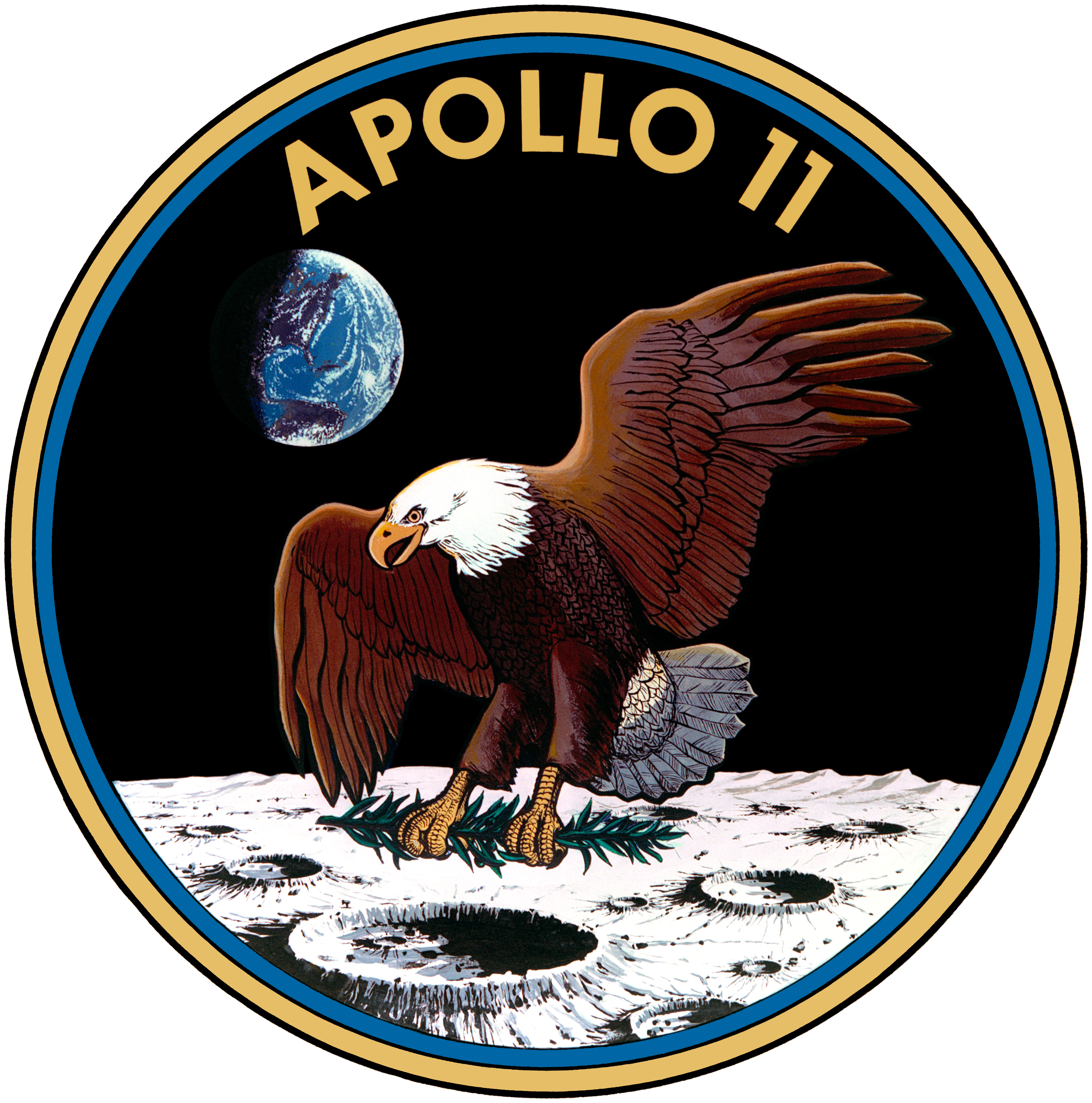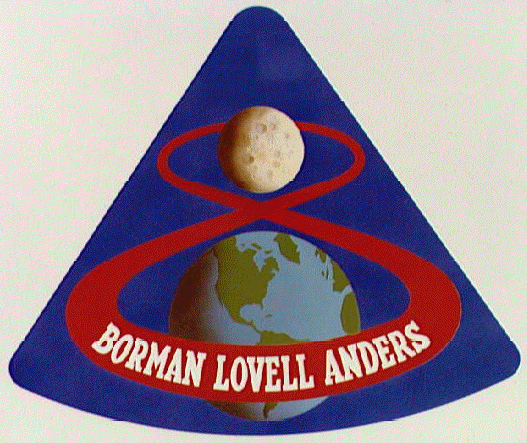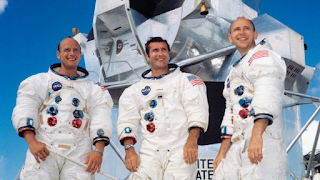Some People Collect Rare Fish
Others collect autographs or baseball cards or any of a thousand other things, usually related to sports or heritage or some perceived future value. Well, I'm a dork. A fully nerded out space geek. I love the space program, I love science, I love math, and I love what our best and brightest minds did when challenged to go to the moon by President Kennedy in 1961. They did it.
In the Summer of 2008, I fulfilled a lifelong dream to go to Space Camp, traveling to Huntsville, Alabama with my son and family for a Parent/Child weekend. While there, we saw one of the Apollo space program relics, the command module from Apollo 16, and I got an idea: some men travel to see all the MLB ballparks, why can't I travel to see all of the Apollo capsules on display throughout the country? So beginning that very weekend, that's what I set out to do. This blog is the chronicle of that journey. Not in chronological order, come along with me...
To come: Apollo 11
Apollo 11. The flight that made NASA famous.
(Patch description)
The Apollo 11 Lunar Surface Journal. Geek heaven, containing the entire annotated transcript of the moon landing. Main page.
The public rightly celebrated reaching the goal Kennedy set a decade before:

(Patch description)
The Apollo 11 Lunar Surface Journal. Geek heaven, containing the entire annotated transcript of the moon landing. Main page.
The public rightly celebrated reaching the goal Kennedy set a decade before:
Apollo 12 — "Yankee Clipper", Virginia Air and Space Center, Hampton, VA
Pete Conrad, Dick Gordon, and Al Bean went back to the moon. It was the second manned touchdown mission. And the first boring one.
The number of interesting blunders and mishaps on this mission is pretty remarkable. It's a fun one to research, which I highly recommend. The treatment of this mission in Tom Hanks' excellent miniseries From the Earth to the Moon is a story not to be missed.
We visited the Virginia Science Center in Summer, 2010. We also visited the National Air & Space Museum in D.C., which has far more recognizable relics, but not nearly the access to them as you can get here. I recommend a visit highly.
Click here to see my Flickr album of our visit.
To come: Apollo 13
Apollo 13, the "successful failure".
I have actually been to see the Apollo 13 Command Module Odyssey - currently on display at the Kansas Cosmosphere and Space Center, Hutchinson, Kansas, but it was many years ago. I'll visit it again for the purpose of this blog.
I have actually been to see the Apollo 13 Command Module Odyssey - currently on display at the Kansas Cosmosphere and Space Center, Hutchinson, Kansas, but it was many years ago. I'll visit it again for the purpose of this blog.
To come: Apollo 14
Apollo 14, the replacement mission for Apollo 13, traveling to the Fra Mauro highlands with Al Shepherd in command. Golf on the moon.
Details:
Command module name
Location today
Exciting details about this mission
Men who flew it
Names of the other modules
Distance traveled, launch date, landing date, landing location
Photo of me next to it
Link to site that houses it (place for that above)
Details:
Command module name
Location today
Exciting details about this mission
Men who flew it
Names of the other modules
Distance traveled, launch date, landing date, landing location
Photo of me next to it
Link to site that houses it (place for that above)
Apollo 15 - Endeavour
Welcome to the National Museum of the United States Air Force, the home of the Apollo 15 Command Module Endeavour - Wright-Patterson Air Force Base, near Dayton, Ohio.
 |
| The boy, me, and Endeavour. Click here to go to Flicker photoset of our visit. |
Apollo 16 - Casper
Apollo 16, CASPER, located at the U.S. Space and Rocket Center, Huntsville, Alabama.
Much, much, much, much more to come later, but this photo was taken during "You have the place to yourselves" time at the museum at the U.S. Space and Rocket Center while Dustin and I were at SPACE CAMP. Yes, that Space Camp. I had to wait until I was 38 years old, but I finally got to go to Space Camp. And I loved it. So much that it inspired me to go visit all of the Apollo space capsules. Yep, this photo was the inspiration for this quest, and the web page you're reading now. I'd say this photo represents one of the happiest weeks of my life.

Much, much, much, much more to come later, but this photo was taken during "You have the place to yourselves" time at the museum at the U.S. Space and Rocket Center while Dustin and I were at SPACE CAMP. Yes, that Space Camp. I had to wait until I was 38 years old, but I finally got to go to Space Camp. And I loved it. So much that it inspired me to go visit all of the Apollo space capsules. Yep, this photo was the inspiration for this quest, and the web page you're reading now. I'd say this photo represents one of the happiest weeks of my life.
To come: Apollo 17
Harrison Schmidt and Gene Cernan, the last men to stand on the moon in the 20th century.
Apollo 6
Wikipedia has this to say about the flight. Plus, I found the following book excerpt:
The second Saturn V launch unfortunately did not meet with the success
of the first. As the Apollo 6 vehicle lifted off its pad on April 4,
1968 ("Early morning, April 4/shot rings out in the Memphis sky/Free at last, They took your life/They could not take your pride"), the ground
controllers had visions of a repeat performance of the Apollo 4 mission.
Their expectations, however, were not realized, since after only six
minutes into the flight, the Saturn V suffered the first of a number of
setbacks. Two of the five J-2 engines of the S-II stage prematurely shut
down. The crisis was not fatal, however, as the remaining three engines
continued to burn longer than programmed owing to the extra propellant
which the two shutdown engines had not consumed.
But there were still more problems ahead for the Apollo 6 mission. Since
the premature shutdown caused the S-II stage to be slower at burnout
than programmed, the guidance computer commanded the S-IVB stage to burn
about 30 seconds longer to make up the difference. This additional
burn-time depleted ten tons of additional S-IVB propellant, fuel that
was to have been used when the S-IVB was restarted after a two-orbit
coast. Aimed at a 115-mile circular orbit, the Apollo 6 payload was
finally placed into a 110- by 225-miles elliptical orbit. If the Apollo
6 had been carrying men for the lunar trip, the mission would probably
have been aborted. Since the purpose of this flight was to have the
Saturn V place a payload into orbit, the mission was in effect a success
even though it was in the wrong orbit.
One more difficulty, however, was to lie ahead in this hard-luck
mission. Following a two-orbit coast, the S-IVB stage failed to reignite
when commanded from the ground to do so. The purpose of this second
S-IVB burn was to propel the payload to a distance of 322,000 miles into
space. This maneuver would be quite similar to that which S-IVB would be
required to perform in the actual lunar mission.
To salvage what they could from the Apollo 6 mission, the NASA ground
controllers commanded the 21,500-pound-thrust service module engine to
drive the spacecraft to a 13,821-mile altitude, which was far short of
the planned 322,000-mile apogee. Later analysis of the flight revealed
that the early shutdown of the two J-2 engines was due to the improper
installation of two wires (newer information in Wikipedia indicates that "pogo" shaking of the craft on liftoff likely broke a propellant line, leading to an automatic shutdown, but the wire carrying the shutdown command was cross-wired from engine 2 to 3. When 3 shut down, further failsafe sensors caused the cross-wired engine 2 to shut down as well. The fact that these wires were cross-wired rather than simply miswired may have prevented a catastrophic failure of the spacecraft). A leak in one of the propellant lines probably was responsible for the failure of
the S-IVB to reignite in orbit. It was not the Saturn V that failed, but
the men who served her. -- Saturn V, The Moon Rocket (1970) by William G. Holder and Glenn Holder. Julian Messner, New York.
 In the Summer of 2008, my son and I traveled with the family to visit Huntsville, Alabama, and spend a weekend together at Space Camp. On a side trip afterwards, we discovered that the Apollo 6 capsule was only a few miles away from our hotel in downtown Atlanta, Georgia at the Fernbank Science Center. This Apollo capsule was the first one that I saw after I began my quest, but it's approximately the fifth in my life. In any event, because of its relative historical INsignificance, it is stored right out in the open, with nothing but a 4-foot-high wall of plexiglas to prevent you from reaching out and touching Apollo history.
In the Summer of 2008, my son and I traveled with the family to visit Huntsville, Alabama, and spend a weekend together at Space Camp. On a side trip afterwards, we discovered that the Apollo 6 capsule was only a few miles away from our hotel in downtown Atlanta, Georgia at the Fernbank Science Center. This Apollo capsule was the first one that I saw after I began my quest, but it's approximately the fifth in my life. In any event, because of its relative historical INsignificance, it is stored right out in the open, with nothing but a 4-foot-high wall of plexiglas to prevent you from reaching out and touching Apollo history.Geek bonus: The Apollo 6 Press Kit in PDF.
Apollo 8

Link to information on Apollo 8.
For reference, from above: "The Apollo 8 Command Module is on display at the Chicago Museum of Science and Industry, Chicago, Illinois." -- where I have been, many times, and obviously need to go again soon.
Apollo 9
Following the collossal gamble and achievement that was Apollo 8, NASA went back to checking the boxes: "The primary objective of Apollo 9 was an Earth-orbital engineering test of the first crewed lunar module, or LM. Other prime objectives included an overall checkout of launch vehicle and spacecraft systems, the crew, and procedures." — NASA.gov
Starting on March 3rd, 1969, everything went more-or-less to plan. And that's part of why you don't remember much about it. Jim McDivitt (Gemini 4 veteran — yes, he commanded the mission with Ed White's first-American-spacewalk), Dave Scott (Gemini 8 veteran — yes, the one where he and Neil Armstrong spun out while attached to the Agena and nearly died — Scott would go on to command Apollo 15), and Rusty Schweickart (rookie, this was his only spaceflight) flew "as successful a flight as any of us could ever wish for, as well as being as successful as any of us have ever seen." — George Mueller, associate NASA administrator.
Jayne and I came in August of 2023 to the San Diego Air & Space Museum to see Apollo 9's "Gumdrop" command module. It was only the second crewed mission to use the Saturn V launch vehicle, but also "only" went to low/medium Earth orbit. The third-stage S-IV-b rocket was used to propel itself into heliocentric (solar) orbit where it remains to this day, but the LM-CSM spacecraft stayed closer to Earth. I assume its lower speed in LEO and at re-entry explains why so much of the silver Kapton foil seems to have survived compared to the moon-bound capsules I've seen.
Anyway, she's a beautiful ship in an accessible display surrounded by a first-class museum. Go check Gumdrop out when you can.
Apollo 10
About which, also, little is remembered. NASA historical document on Apollo 10, where we learn that "The Apollo 10 Command Module 'Charlie Brown' is on display at the Science Museum, London, England." Okay, I may not get to see that one. But we'll keep it on the list anyway.
AS-201
Here's one to keep on the list, just because it's as close as Omaha: AS-201, an unmanned test launch from 1966. I got information on it from this website, which is a gold mine.
OV-105 Space Shuttle Endeavour
In 1987, Congress authorized NASA to use structural spare parts and let new contracts to build a replacement for Challenger. Space Shuttle Endeavour is that ship. She lives at the California Science Center in Los Angeles. And she's about to go into hiding!
The CSC is building a brand-new facility to permanently house OV-105, on display here in downtown LA since 2012 — only a few miles from where she was constructed in Palmdale. Right now, she sits on earthquake-mount pylons in a wheels-up configuration (Discovery, at D.C.'s Udvar-Hazy Center, sits atop her wheel struts, and low enough to prevent passing directly beneath), high enough to let you walk right under her belly and inspect tile damage from her final flight up close! And to shop for souvenirs directly under her nose.
An interesting detail I noticed is that Atlantis (at KSC) and Discovery both appeared "dirty" to me. Not dusty like recently-uncleaned, but like "used." Which I guess is appropriate, since all of them ARE used. But Endeavour looks shiny. Polished. Ready to go again. And that's good, because at the end of 2023 America's fifth space-going shuttle will be moved to her new berth but then removed from public viewing for up to two more years while the building and exhibit space around her are completed. Different from Atlantis and Discovery, she'll be displayed vertically, as a full STS stack along with the last unflown external tank and a pair of SRBs. It will be amazing, and I will be back.
Apollo-Soyuz Test Project
After the Apollo moon landings were finished, a few circumstances came together: 1) There were still some Apollo flight-ready spacecraft available; 2) There were still a few capabilities to test, like the ability to mount a rescue in space; 3) Deke Slayton, one of the original Mercury 7 astronauts, was medically cleared to fly from the Afib that grounded him way back in 1962 before he ever got to space; and 4) The Soviets were willing to do a little showboating/show of cooperation dance, and so were we. CSM-111 was a "surplus" from the original Apollo program, and following the July 24, 1975 return from orbit — six years to the day after Apollo 11 did the same — the Apollo program truly ended.
The American ASTP command module capsule is owned by the Smithsonian, on "official" display with KSC, but currently on indefinite display at the California Science Center, also the home of the Space Shuttle Endeavour, the Gemini 11 capsule, and the Mercury-Redstone capsule that flew spacechimp Ham into space.
Resources
Links to resources used in creating the above:
http://www.spaceflightonline.com/Apollo%20Command%20Modules
Very similar to this blog, the above site lists the known Apollo capsules, their locations, and shows pictures of each.
http://historicspacecraft.com/Apollo_Capsules.html
Also a great site, though incomplete, showing photos and locations.
http://nssdc.gsfc.nasa.gov/planetary/lunar/apolloloc.html
An incredibly slow site, devoid of pictures, but still listing each capsule and location, with links to copious information about each flight. Here's a display plaque from the San Diego Air & Space Museum in August, 2023 listing all the CM locations. No guarantees of accuracy will be offered.
http://www.spaceflightonline.com/Apollo%20Command%20Modules
Very similar to this blog, the above site lists the known Apollo capsules, their locations, and shows pictures of each.
http://historicspacecraft.com/Apollo_Capsules.html
Also a great site, though incomplete, showing photos and locations.
http://nssdc.gsfc.nasa.gov/planetary/lunar/apolloloc.html
An incredibly slow site, devoid of pictures, but still listing each capsule and location, with links to copious information about each flight. Here's a display plaque from the San Diego Air & Space Museum in August, 2023 listing all the CM locations. No guarantees of accuracy will be offered.
Subscribe to:
Posts (Atom)





























